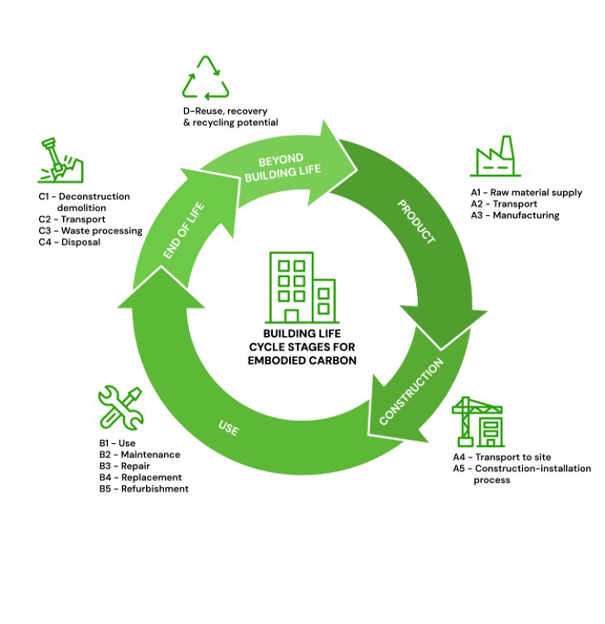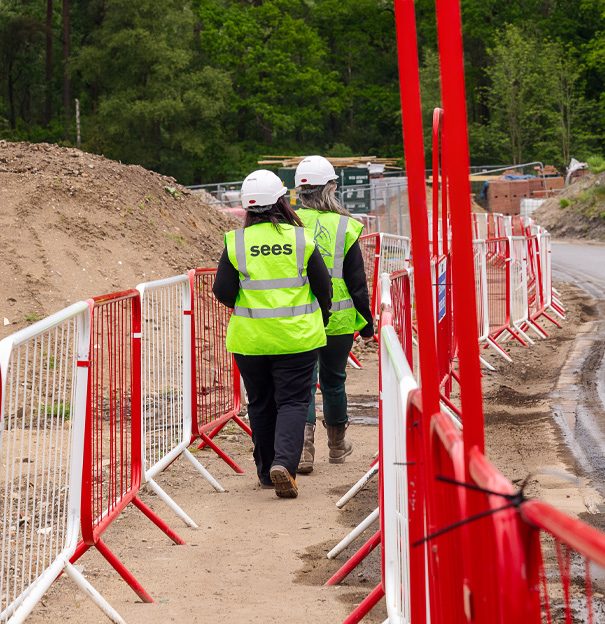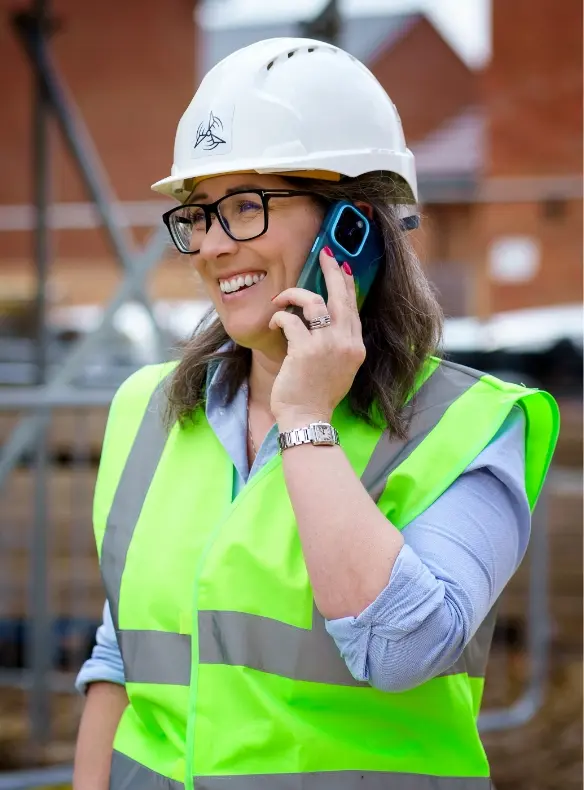
Whole Life Carbon Assessment (WLCA)
Home > Whole Life Carbon Assessment (WLCA)
What Are They and Why They Matter
As the UK accelerates its journey towards net zero carbon by 2050, the construction and built environment sector is under increasing pressure to reduce emissions. This comes as no surprise – the sector contributes around 25% of the UK’s total carbon footprint, when both operational and embodied emissions are included.
Traditionally, efforts have focused on operational energy – the heating, cooling, lighting, and powering of buildings. However, with the energy grid decarbonising, embodied carbon (emissions from materials, manufacturing, and construction) is set to make up the majority of emissions in coming decades.
This shift in focus places Whole Life Carbon Assessments (WLCA) at the forefront – not as an optional extra, but as a critical tool for designing and building responsibly.

What is a WLCA?
A Whole Life Carbon Assessment evaluates all carbon emissions associated with a building throughout its entire life cycle, from the extraction of raw materials to end-of-life demolition and potential reuse. Unlike standard building LCA’s, which focus only on embodied carbon, a WLCA combines both embodied and operational carbon to provide a complete picture of a building’s environmental impact.
The assessment follows BS EN 15978:2011 and is aligned with the RICS Professional Statement: Whole Life Carbon Assessment for the Built Environment. It breaks down a project into four main stages:
A1–A5: Upfront (Embodied) Carbon
- Extraction of raw materials
- Manufacturing and transport of products
- Construction processes and on-site impacts
B1–B7: Operational Carbon
- In-use emissions from heating, cooling, lighting, and appliances
- Maintenance, repairs, refurbishments, and operational water use
C1–C4: End-of-Life
- Demolition, transport, waste processing, and disposal
D: Beyond the Life Cycle
- Potential benefits from reuse, recycling, or energy recovery of materials
Why is WLCA Important?
Because a building that is “net zero in operation” could still carry a significant carbon cost from its materials and construction. WLCA makes these hidden impacts visible – and therefore manageable. By understanding the whole life carbon footprint, you can make informed decisions to reduce emissions across all stages of your project.
Additionally, UK policies and local planning requirements are increasingly referencing WLC assessments as part of their sustainability and climate strategies.

Who Should Consider a WLCA?
A Whole Life Carbon Assessment is relevant to any type of project, including:
- Schools planning new classroom blocks
- Businesses expanding into offices or industrial spaces
- Housing associations delivering affordable homes
- Families building low-carbon dream homes
- Local authorities undertaking civic redevelopments
- Developers preparing major commercial or mixed-use schemes
- Retrofit projects aiming to upgrade existing buildings sustainably
If your project involves materials, construction, or energy use, it has a carbon footprint. WLCA helps you make responsible, cost-effective, and climate-conscious decisions at every stage.
Our Expertise
All our specialists are CIBSE Whole Life Carbon trained and One Click LCA certified, ensuring assessments are completed to the highest industry standards using leading analysis software.


